When you manage to carve out a couple of hours on an evening to get some development on your game done, you always want to make as much progress as possible in that short time.
‘Progress’ however, can be hard to define.
With a story based adventure game, progress is often defined as getting some interactions hooked up to an object or writing some witty dialogue or fixing the 20 bugs you have in one of your scenes. All of these things directly take you towards completing more of the game, so they feel rewarding and you go to bed feeling like you’ve made good use of the time.
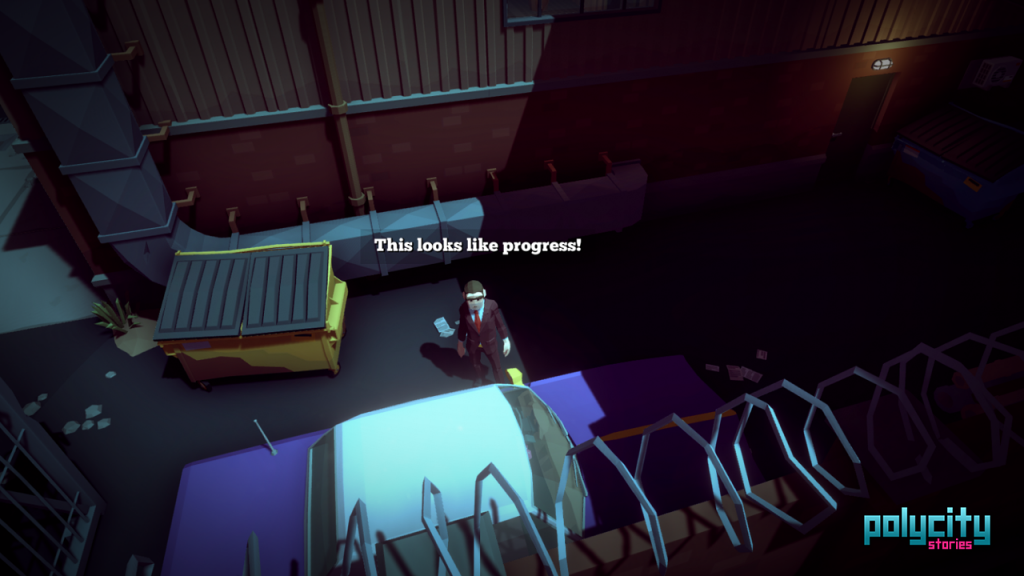
But sometimes those precious hours need to be spent doing something else. Something that doesn’t advance the story, or add an interaction or create anything noticeable to the final player at all.
Sometimes you need to take a step back and create something NOW that will save you time LATER. Yesterday evening was that time.
After having strayed from the path recently, I ended up opening a real can of worms when it came to the main location map.
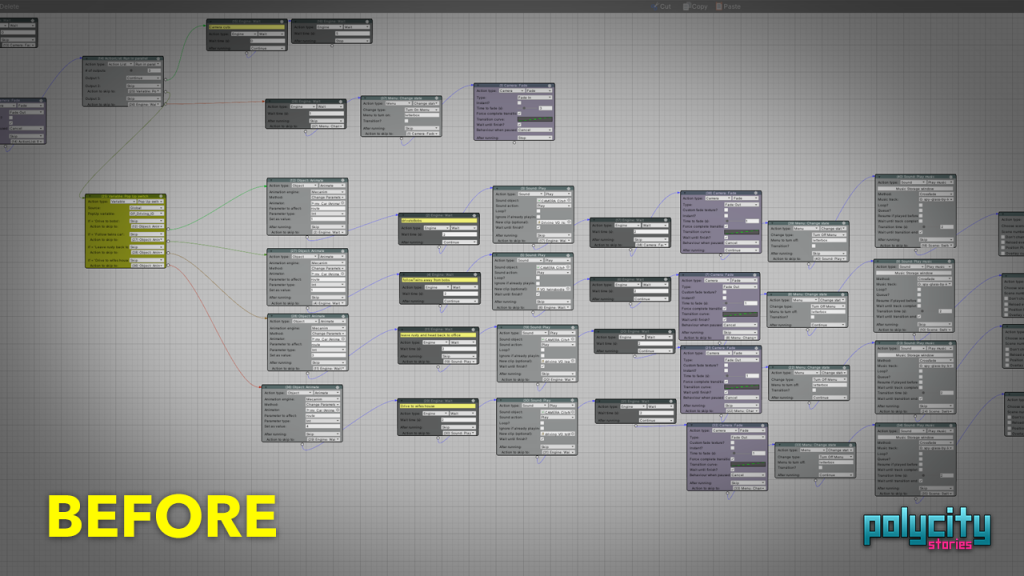
For any location the player chooses from the map I need to check the users progress, then prepare a cutscene of the protagonist driving through the streets of the city, with some witty voice over to direct the player to their next task and summarise the story.
The only solution was to spend the evening making a clever template action to clean up this mess and handle all map clicks from now on as the problem will only get bigger as the location count goes up!
With Adventure Creator these templates are called Action list assets
These scene independent blocks, allow you to define a complex, reusable action list, into which you can plug parameters.
This means that for certain interactions that you’ll want to repeat many times you can build a template, and use this same template whenever you want the character to do that action, with parameters exposed for some variation.
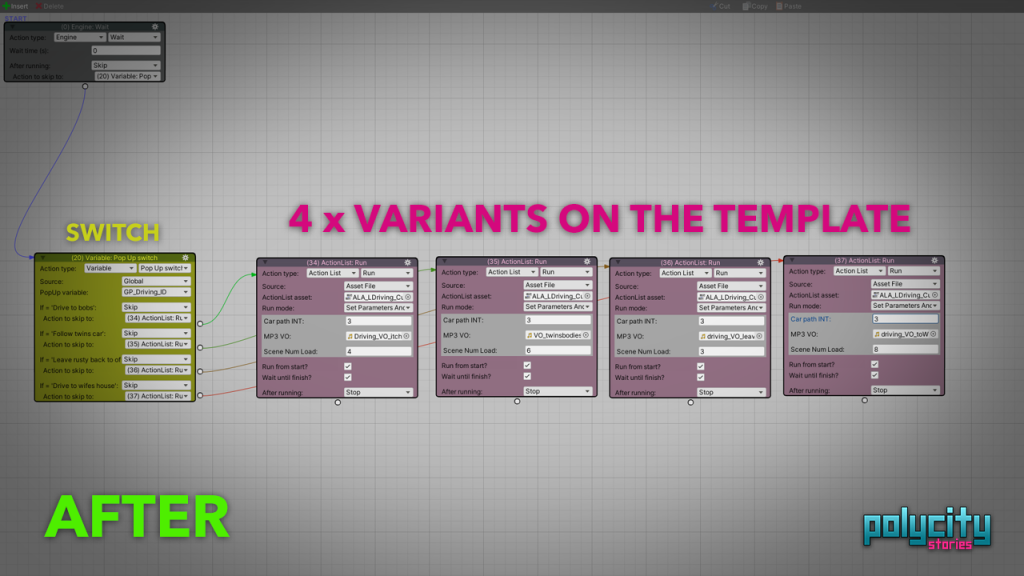
This powerful “code free” building block of Adventure Creator is something that I already use regularly throughout the game. Being a fairly well experienced C# programmer these are core principles, but the visual node editor of AC is just so much easier to manage and track.
Contained in each of those pink boxes (above) is a new re-usable template action which deals with camera fades, pauses, music transitions, voice over playback, menu visibility and finally the loading of the next scene.
The template itself (below), took a little time to configure, but it’s now a powerful, re-usable tool which will save me so much time (and screen space) as I move forward.
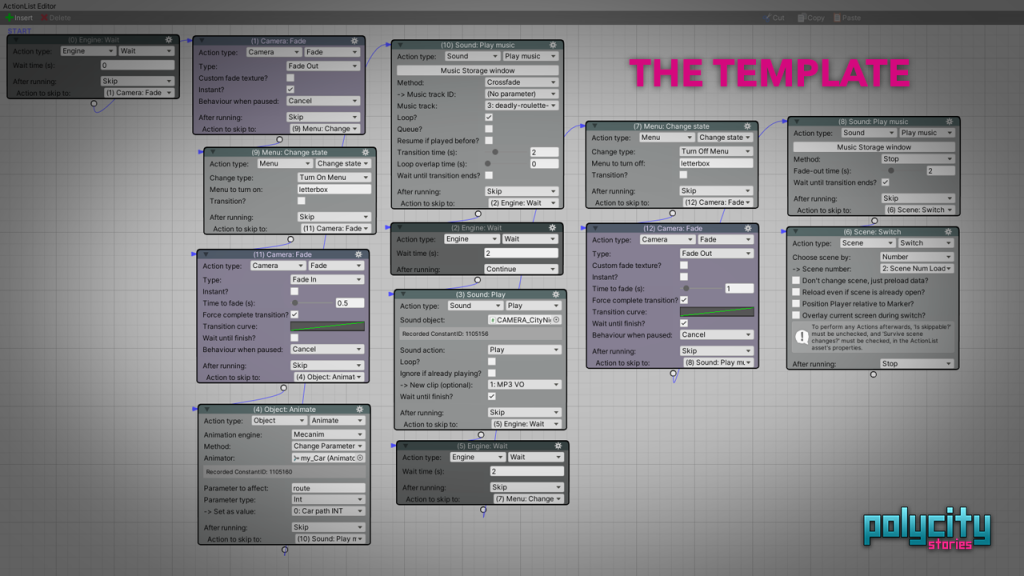
All of those interconnected actions (above) now only need to exist once, and can be re-used as many times as I need, by just plugging in 3 variables.
- The path/route for the car to take around the scene
- The MP3 Audio narration to play during that time
- Which scene to load after we’re done
Aaaaaaannnd Breathe!
So that’s an evenings work, and the kind of really important progress which no-one will ever see.
The joys of game development 🙂
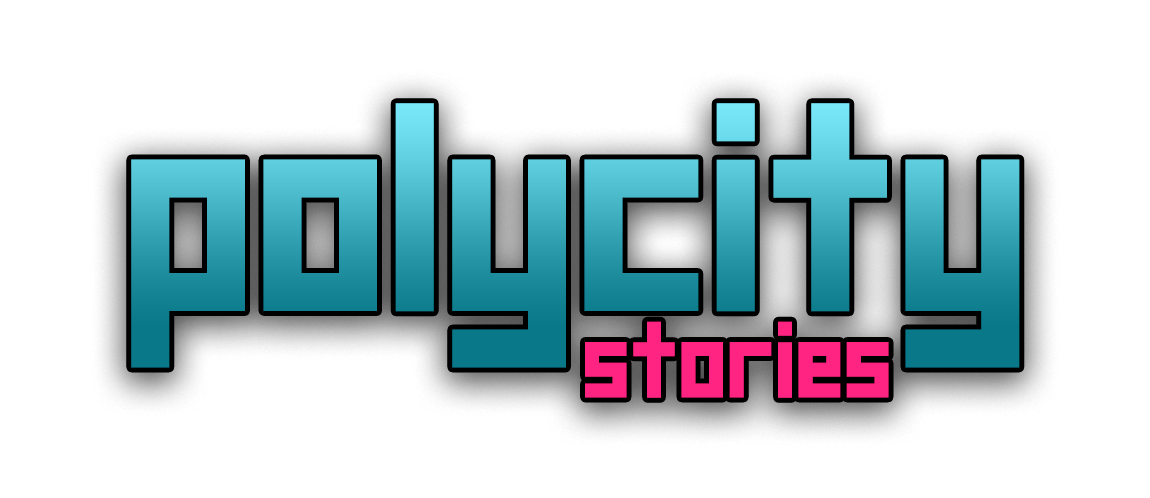
Recent Comments